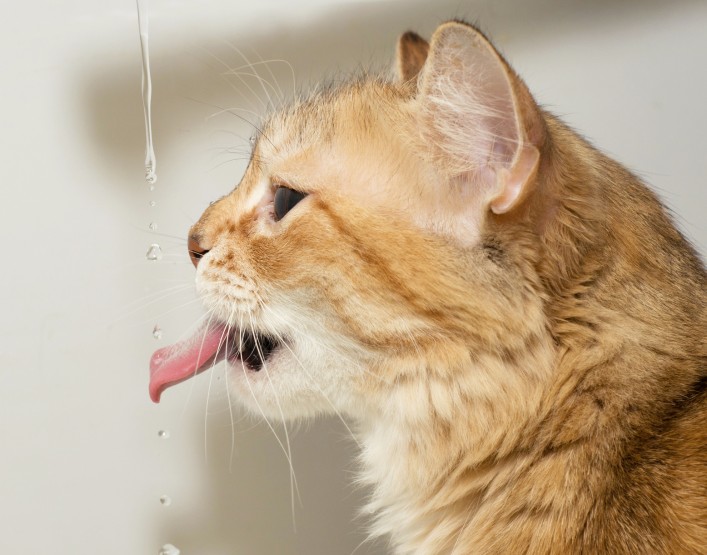
Also known as Acute Moist Dermatitis or Moist Eczema, Hot Spots can seemingly appear spontaneously anywhere on a dogs body and the area involved can rapidly spread. This raw, unsightly skin disorder has a variety of causes but the most consistent factor is a bacterial infection. There are a number of kinds of bacteria that can be cultured from a hot spot and fortunately most respond to oral and topical antibiotics. Anything that irritates or breaks the skin can create the right environment for bacterial contamination if the skin surface is wet. The bodys response is either to itch or become inflamed. The itching then causes the dog to lick or chew the area, which further damages the skin, and creates a cycle of itching, scratching and chewing. If left to develop the infection goes into the deep layers of the skin.
Hot spots tend to occur most often in the summer months, and dogs with matted, dirty coats are at greater risk of developing them. Some owners keep their long haired dogs shaved in the summer, which helps prevent the thick coat from covering any dampness on the surface of the skin. Regular grooming enables swift intervention if a hot spot is developing; often they will simply get worse and worse until treated so veterinary help is advisable. A hot spot that is left untreated may turn into a lick granuloma, which can be difficult to get rid of.
Typical locations for "hot spots" are the side of the face and the flank areas. Golden retrievers and young dogs seem to be predisposed, while they are seldom, if ever, found in cats.
What to look out for
- Scratching or biting at one area incessantly
- A patch of hair loss with reddened moist skin, often with a film of pus
- Scabs and crusts
- Surrounding hair wet from saliva
Diagnosis is usually obvious from the clinical signs, but your veterinarian may be inclined to search for any contributing factors by doing allergy testing, or take a bacteriology swab so that antibiotic selection is targeted specifically at the bacterium responsible. If the hot spot is on the dogs back leg it is worth checking the anal glands are not the source of the discomfort by emptying them.
Treatment
- Clip the hair around the hot spot. The hot spot may be more extensive than it originally appears. Clipping will expose the area to the air and accelerate healing (scabbing over)
- Topical medication: the area can be cleaned with an antiseptic solution suchas chlorhexidine, and a topical antibiotic cream applied. There is little point of this if the dog will simply lick the cream off (i.e. use buster collar, or only use topical cream if hot spot on face)
- Break the scratch cycle. To allow the hot spot to heal, the dog must stop scratching at it. A one off steroid injection is usually very effective, but sometimes a short course of oral steroids is necessary. Your dog may be more hungry and thirsty while receiving corticosteroids, this is a common side effect. As a consequence, the dog may need to urinate more frequently than normal.
- Oral antibiotics. The best way to deal with a deep skin infection is to deliver antibiotics to the site of the hot spot via the blood stream. If a hot spot is quite advanced, at least a 10-14 day course of a broad spectrum antibiotic is required to prevent immediate recurrence.
- Elimination of predisposing factors: aggressive flea control, investigation to rule out food and pollen allergies etc.
 Making Sure Older Cats Drink Enough Water To Support Kidney Function
Making Sure Older
Making Sure Older Cats Drink Enough Water To Support Kidney Function
Making Sure Older
 Common Reasons Why A Cat Might Refuse To Use A Litter Tray
Common Reasons Wh
Common Reasons Why A Cat Might Refuse To Use A Litter Tray
Common Reasons Wh
 Five Pertinent Questions To Ask The Dog Breeders You May Be Considering Buying From
Five Pertinent Qu
Five Pertinent Questions To Ask The Dog Breeders You May Be Considering Buying From
Five Pertinent Qu
 How To Prevent Feather Plucking In Your Pet Parrot
How To Prevent Fe
How To Prevent Feather Plucking In Your Pet Parrot
How To Prevent Fe
 2 Breeds Of Cat That Boast Longer Lifespans
2 Breeds Of Cat T
2 Breeds Of Cat That Boast Longer Lifespans
2 Breeds Of Cat T
Copyright © 2005-2016 Pet Information All Rights Reserved
Contact us: www162date@outlook.com